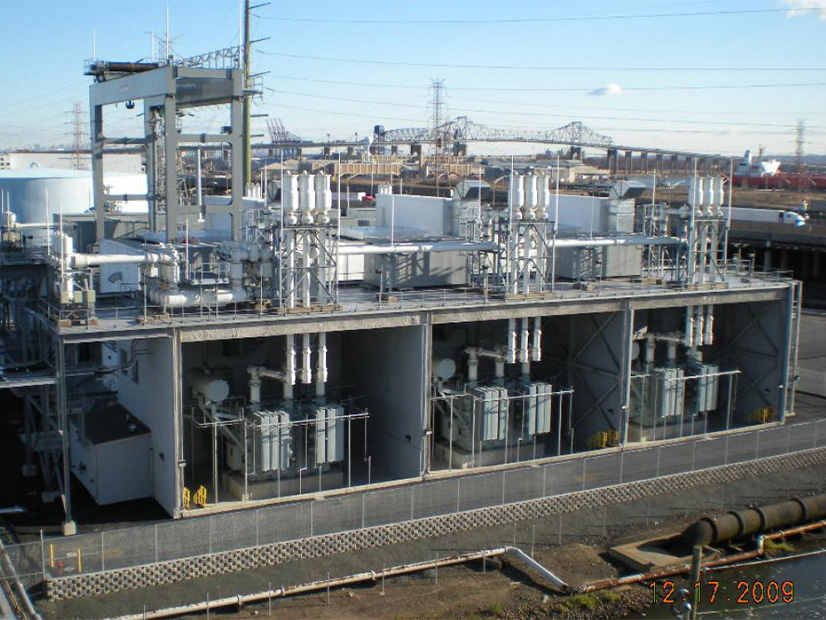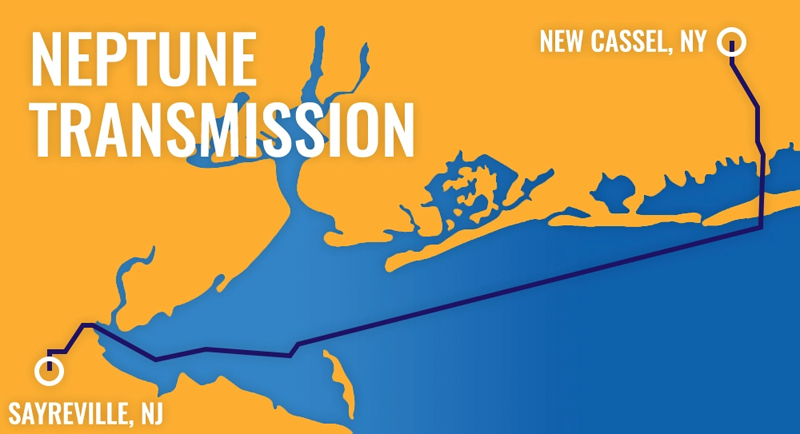
Stakeholders in New York are challenging a proposed revision to PJM’s tariff that they say could saddle them with some of the $1.07 billion New Jersey regulators have agreed to pay for transmission upgrades to accommodate the Garden State’s offshore wind projects.
The PJM Transmission Owners filed a proposal Aug. 19 to assign the costs of the transmission upgrades to New Jersey ratepayers on a load-share ratio basis, and provided additional information, in response to a FERC deficiency letter, on Oct. 5 (ER22-2690).
The TOs’ filings prompted a protest Oct. 31 by Long Island Power Authority, New York Power Authority and three merchant transmission facilities, Neptune Regional Transmission System, Linden VFT, and Hudson Transmission Partners (filing as the “MTF Parties”), who said the tariff change could lead to cost assessments on parties outside of New Jersey, in violation of PJM’s State Agreement Approach. The SAA allows states to sponsor transmission to support their public policy needs while requiring them to pay 100% of the costs. (See NJ BPU OKs $1.07B OSW Transmission Expansion.)
The MTF Parties said they were alarmed by the TOs’ response to the deficiency letter, which suggested they could face costs if FERC rejects an uncontested settlement in a separate dispute over revisions to PJM’s border rate, which has not been increased since 2004 (ER19-2105). (See Settlement Hearing Set for PJM Border Rate Dispute.)
Linden said the proposed changes would increase its border rate charges from $6.1 million to about $16 million annually, leaving it insolvent or forcing it to change its business model. Under the settlement, the border rates would more than double over seven years but with discounts for customers using transmission paths from PJM to the three MTFs. The settlement, which was certified as uncontested in December 2021, awaits commission action.
In their response to FERC’s deficiency letter in the SAA docket, the PJM TOs stated that “even if the commission declines to approve the border rate settlement and at some point in the future the revenue requirement of projects constructed under Rate Schedule FERC No. 49 is included in the border yearly charge, it would constitute only a very small fraction of the border yearly charge applicable to point-to-point transmission service with a point of delivery to an MTF.”
The MTF Parties asked FERC to revise the SAA cost allocation provisions to require that cost responsibility apply only to firm point-to-point transmission service within New Jersey “for the delivery of energy to, and consumption of such energy by, native load customers within the state of New Jersey.” It also requests that language be added that precludes border of PJM service customers from being assigned any cost responsibility
“The commission must further make clear that border rate service is excluded from cost responsibility for the NJ-SAA projects — and that principle and commitment by the NJ BPU cannot be undermined by indirect means,” they said.
The New Jersey Board of Public Utilities and the TOs responded to the MTF protest Nov. 10, saying the issues they raised are speculative and out of scope.
The BPU said “that if the MTFs believe that the current border rate tariff provisions may inappropriately allocate a small portion of public policy project costs to them, they should address those concerns in a separate proceeding rather than delay approval of the proposed methodology for allocating the direct costs of SAA projects.”
 The 660-MW Hudson Transmission project connects PJM and New York City, providing power for customers of the NYPA. | Hudson Transmission Partners
The 660-MW Hudson Transmission project connects PJM and New York City, providing power for customers of the NYPA. | Hudson Transmission Partners
The TOs said that when SAA projects are complete, they become a part of the PJM’s integrated transmission system and border rate service does not reflect the cost of individual Regional Transmission Expansion Plan projects.
“When voluntarily requesting border rate service, the MTF Parties are paying, through the border yearly charge, for the support provided by the entire PJM transmission system to enable their export transactions — they are not paying for the costs of specific RTEP projects’ construction for which cost responsibility has been assigned to responsible customers,” the PJM TOs said.
The 660-MW Hudson Transmission project connects PJM and New York City, providing power for customers of the NYPA. Neptune operates a 660-MW 65-mile undersea and underground HVDC line from Sayreville, N.J. to Nassau County, Long Island under a long-term agreement with LIPA. Linden VFT delivers power from its only customer, PSEG Energy Resources & Trade, to its facilities near the PJM border.
$400M Reduction in Capacity Costs?
During a Nov. 4 PJM Transmission Expansion Advisory Committee special session, Committee Chair Suzanne Glatz said the RTO anticipated a resolution of the SAA revisions in October but that the deficiency letter and subsequent filings have extended that timeline to December.
PJM’s TEAC presentation estimated the installation of 7,500 megawatts of offshore wind, with a 2,370-MW unforced capacity rating, could reduce the cost of capacity sold in the 2028/29 Base Residual Auction by as much as $400 million. The estimate relies on a set of assumptions including the 2023/24 BRA market offers and associated price mitigation rules, planning parameters remaining similar, and a 2028/29 load forecast from the RTEP study.
With those assumptions, the estimate found an expected $1,007,908,145 in capacity sold with no addition of offshore wind and $612,091,604 sold with the addition of the project and corresponding transmission upgrades. Each of the three alternative scenarios considered for the upgrades had approximately the same estimated impact.
PJM cautioned that the figures it presented are not projections of future market prices and were produced to compare the impact of the transmission studies.
“The market analysis simulations were performed as a potential factor in differentiating between the transmission solutions proposed and not for the purpose of projecting or forecasting future market performance. Our intent was to compare transmission solutions; the key takeaway is that the difference in market performance between the transmission solutions studied was negligible,” PJM wrote in an email.
 Neptune operates a 660-MW 65-mile undersea and underground HVDC line from Sayreville, N.J. to Nassau County, Long Island under a long-term agreement with LIPA. | Neptune Regional Transmission System
Neptune operates a 660-MW 65-mile undersea and underground HVDC line from Sayreville, N.J. to Nassau County, Long Island under a long-term agreement with LIPA. | Neptune Regional Transmission System
Glen Thomas, president of PJM Power Providers, said in an interview that the PJM markets have demonstrated the ability to “absorb significant amounts of new generation,” however he’s concerned about the possibility for the OSW to bid into the BRA for the 2025/26 delivery year, the earliest the project is expected to come online, and construction delays resulting in that capacity not being available when the year comes. In his opinion, the project should not be permitted to participate in BRAs until there’s a “reasonable assurance” that they’ll be available on time.
“These projects tend to come in behind schedule and when you have a three year forward capacity market that’s hard, because they have to know in [2022] if they’re going to be available in [2025/26],” he said.

